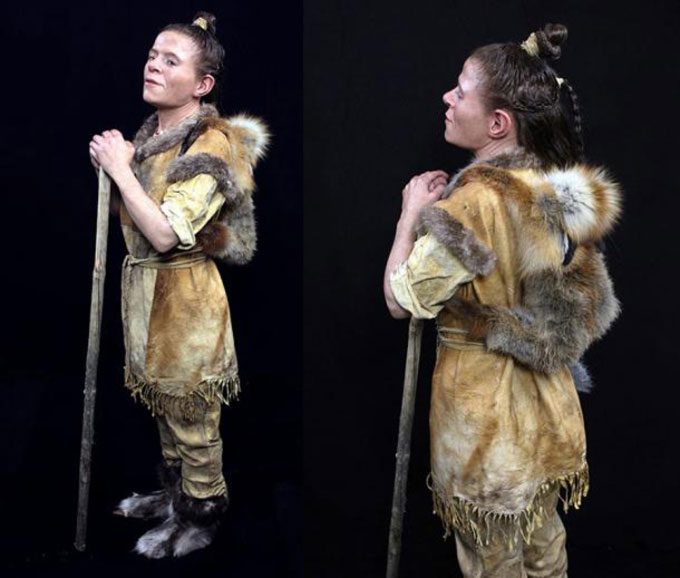Experts spent 350 hours creating a simulation and depicting the features and facial expressions of a 30-year-old woman from the Stone Age.
The woman died in her 30s, but the cause remains unclear. She stood about 152 cm tall, which was quite short even for that time, Ancient Origins reported on February 27.
The woman’s remains were discovered a century ago in a stone grave in the forested area of Lagmansoren, northeastern Sweden. Beside her was a 7-year-old boy. Researchers believe it is likely that he was the woman’s son. They also suggest that the two belonged to a group of nomadic hunters following migrating animals along the Indalsalven River.

Front and back views of the simulation of the Stone Age woman with remains discovered in Lagmansoren, Sweden. (Photo: Oscar Nilsson)
In 2020, the managers at Vasternorrlands Museum (Sweden), which is preserving the woman’s remains, contacted Nilsson. He is a restoration expert who has recreated the faces of over 100 ancient individuals over the past 20 years.
At that time, Vasternorrlands Museum was preparing for a significant exhibition documenting human activities in Sweden over the past 9,500 years. They wanted visitors to be able to observe the oldest face from the north—the woman from Lagmansoren—but did not know what she looked like. The remains of the woman and the Stone Age boy are the oldest ever discovered in the region.
The woman’s skull was exceptionally well-preserved, despite being in an area where harsh natural conditions typically hinder such preservation. To reconstruct the face, Nilsson first scanned the skull and created a life-size replica using a 3D printer. He used pins to determine the depth of the tissue and layered clay to represent the facial muscles, then applied a layer of pliable modeling material.
The completed face was covered in silicone resembling human skin tone, and Nilsson began adding details. The woman had slightly protruding teeth, a non-straight nose, low-set eyes, and a rather masculine jawline.
Although the remains were well-preserved, scientists were unable to obtain any usable DNA samples. This means that the skin and hair color could not be determined chemically. However, Nilsson analyzed historical information and found that she may have had fair skin with dark hair.
Facial expressions are something that technology cannot replicate, and Nilsson needed to reflect on this aspect. He explained that recreating strong emotions like anger was “forbidden” in the facial reconstruction process. Instead, he focused on blending emotions to create the impression that the facial muscles were moving, bringing the face to life.
For the Lagmansoren woman, Nilsson believes she is feeling at home. “She is not threatened; she feels at home and is looking at the boy. It’s a sense of safety but also a hint of pride. Despite her small stature, you wouldn’t want to mess with this woman,” Nilsson shared.





















































